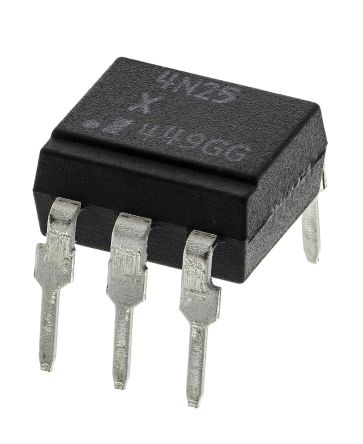
5.3.4 Audio Isolator Using Phototransistor Mode Method 1. This is really an extension of the linear mode of operation, and can be applied using either one of two basic configurations, phototransistor or photodiode.įig. In any of the configurations shown in Fig 5.3.3, the choice of load resistor has a significant effect on the output signal the higher the value of R L the greater the amplitude of the output signal but the narrower the bandwidth, so the value of R L chosen is a compromise that depends on the purpose of the circuit.įor the 4N25 to provide isolation for audio signals the input to the infrared LED must be appropriately biased with a DC voltage, so that when a modulating AC (audio) signal is applied, the current through the LED can be varied without the optocoupler output reaching either saturation or cut off. As the phototransistor now does not function as an amplifier the 'Miller Effect' (where the value of the junction capacitance is multiplied by the current gain of the transistor) does not apply, so the effectively large capacitance of the base/collector junction is greatly reduced, allowing the optocoupler to work at higher speeds, which means in the case of audio applications, a wider bandwidth is available, although this mode of operation greatly reduces the output signal amplitude.

5.3.3(c) the base/collector junction is being used as a photodiode. When the phototransistor output is taken from the base connection (with the emitter left unconnected) as shown in Fig. Consequently these specialised devices are considerably more expensive than simple general-purpose optocouplers. 5.3.1 can therefore claim both better performance and stability over the lifetime of the circuit. Optocouplers such as the I元00 from Vishay illustrated in Fig. Variations can occur due to changes in ambient temperature and to ageing of the infrared LED. Without some sort of feedback, variations in the current transfer ratio will affect the performance of the optocoupler. Using feedback from a second photodiode with characteristics closely matched to those of the output photodiode also overcomes a basic problem with optocouplers.

In audio systems isolation between inputs and higher voltage/current equipment is usually provided by audio transformers, however it is also possible to use specialised audio optocouplers such as the I元00, which uses an infra red LED to illuminate one photodiode as an output device and a second photodiode to provide feedback, ensuring improved linearity and wider frequency range than phototransistor or photoresistor alternatives.


 0 kommentar(er)
0 kommentar(er)
